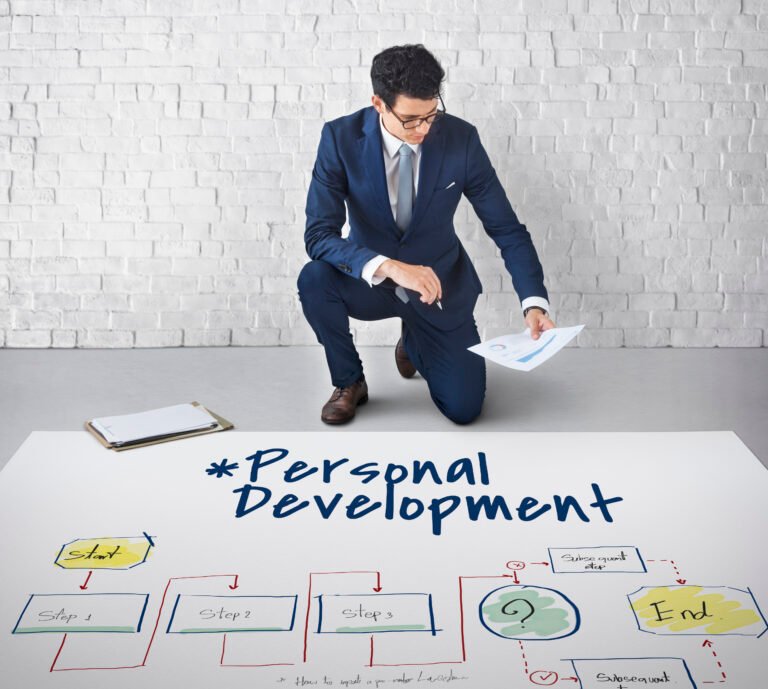Being confident on camera isn’t magic — it’s measurable. Modern tools (what I’ll call an AI Confidence Analyzer) can evaluate how you look, sound, and move during interviews, then give specific feedback you can use to improve. This guide teaches you exactly how AI analyzes confidence and, more importantly, gives seven actionable methods to raise your interview presence using both tech and practice. Whether you’re prepping for remote job interviews, auditions, sales pitches, or public-facing meetings, these methods will help you perform better — and feel more confident — on camera.

Quick overview — what this article covers
- What an AI Confidence Analyzer actually measures
- 7 practical methods to improve measurable confidence signals
- Technical settings: webcam, mic, lighting, and camera framing
- Recommended gear (webcam, lapel mic, gimbal, ring light, posture trainers, coaching apps) — add affiliate links later
- A 30-day practice plan and metrics to track progress
- Privacy, ethics, and how to use AI feedback constructively
What is an AI Confidence Analyzer? (and why it helps)
An AI Confidence Analyzer is any system or workflow that uses algorithms to evaluate signals of on-camera confidence — facial micro-expressions, eye contact, head movement, posture, speech rate, volume, tone, filler words, and even breathing patterns. Many coaching apps and interview-prep tools combine computer vision (for face and posture analysis) and audio analysis (for prosody, clarity, and filler detection) to give an objective score and targeted recommendations.
Table of Contents
Why this is useful:
- Objectivity: AI spots patterns you can’t feel (micro-pauses, downward gaze).
- Actionable feedback: Instead of “be more confident,” it says “reduce fillers by X%” or “raise average vocal energy by 10%.”
- Repeatability: You can run the same test before and after training to track real improvement.
Think of the AI Confidence Analyzer as a mirror plus a coach: it shows where you’re weak and prescribes precise drills to fix it.
How AI measures confidence — the technical signals
Before applying fixes, it helps to know what the analyzer looks at. Typical measures include:
- Facial expressiveness & micro-expressions — smile symmetry, eyebrow movement, and micro-expressions that reveal anxiety.
- Eye contact — percentage of time looking at the camera lens vs. looking down or to the side.
- Head posture & movement — nods, tilt, and jitter; too much movement signals nervousness, too little can seem flat.
- Body posture — open chest, square shoulders, and whether you lean in or away.
- Speech rate & pausing — words per minute and the distribution of purposeful pauses vs. filler words.
- Vocal range & prosody — pitch variation, loudness, and clarity; monotone voices score lower.
- Filler words — frequency of “um,” “uh,” “like” per minute.
- Breath control — signs of shallow breathing (short phrases without full breath) correlate with stress.
An AI Confidence Analyzer aggregates these signals into a set of scores (e.g., Eye Contact 74/100, Vocal Energy 62/100, Filler Rate 3/min) and recommends targeted practice.
Method 1 — Measure and baseline with an AI Confidence Analyzer
Before you change anything, measure where you are.
Action steps:
- Record a 2–3 minute mock answer to a common interview question (“Tell me about yourself”) using your normal setup.
- Run it through an AI Confidence Analyzer app or a combination of computer-vision + audio tools (many coaching apps include these). If you don’t have an app, use a simple self-checklist: record, transcribe, and time eye contact, fillers, and vocal range manually.
- Note these baseline metrics: fillers/minute, average eye-contact %, words/minute, vocal energy, posture score (self-rated 1–10).
- Set 2–3 measurable short-term goals (e.g., reduce fillers from 6/min to 2/min; raise eye contact from 40% to 70%).
Why it works: Measurement focuses your practice — you know where to spend effort instead of guessing.
Practical tip: Save your recording and the analyzer output as “Day 0” so you can objectively compare later.
Method 2 — Reduce filler words with targeted drills
Filler words are one of the strongest negative signals AI algorithms use. They are easy to measure and reduce with a few focused exercises.
Drills:
- Silent pause training: Read a short 60–90 second script aloud. Each time you feel a filler coming, pause silently for 1–2 seconds. This trains comfort with silence.
- Fillers journaling: Keep a log for each recording: count fillers, note their triggers (transitions, numbers, recall). Patterns reveal where you need to prepare more.
- Breath pacing: Practice inhaling for 3 seconds, exhaling while speaking for segments of 6–8 words. Rhythm reduces fillers.
AI target: lower filler rate to <2/min for polished interviews.
Technical note: Many AI Confidence Analyzer apps highlight filler timestamps so you can replay and practice the exact moment. Use that to do micro-practice.
Method 3 — Improve eye contact & camera focus
Eye contact on camera looks different from in-person. The AI looks at the percentage of frames where your gaze is near the lens.
Practical techniques:
- Lens marker: Place a small sticker or a colored dot near the webcam lens as a visual target. Look at it when you want to appear to make eye contact.
- Script chunking: Break answers into 20–30 second chunks. During each chunk, intentionally look at the lens for 70–80% of the time, then glance at notes briefly between chunks.
- Practice with teleprompter or cue cards: Position them just beneath the camera so your gaze stays high.
Progress drills:
- Record short answers and time eye-contact percentage (many analyzers give this). Aim for 60–80% sustained eye contact during key statements.
Why it works: Tightening focus on lens frames signals connection and authority to interviewers and AI alike.
Method 4 — Boost vocal energy & prosody
Monotone speech scores poorly for confidence. The AI measures pitch variance, loudness dynamics, and cadence.
Exercises:
- Pitch slides (sirens): Warm up with voice sirens — glide up and down across your speaking range for 2–3 minutes. This expands comfortable pitch range.
- Chunk emphasis practice: Mark your script with places to emphasize (numbers, verbs). Practice raising volume and pitch slightly on those words to create contrast.
- Record for range: Read the same paragraph three ways — conversational, emphatic, and storytelling — and compare which feels most engaging. Use AI feedback to see which has higher prosody variance.
Target metric: increased pitch variance and higher average RMS (loudness) without shouting.
Technical settings: Use a good microphone (lapel or USB condenser) so the AI picks up true vocal nuance — poor mics flatten sound and skew results.
Method 5 — Align posture and gestures with presence
Body language is interpreted even over a small camera frame. The AI Confidence Analyzer looks for open chest, upright spine, and controlled hand gestures.
Practical posture fixes:
- Posture trainer: Use a simple posture corrector (wearable or seat cushion) for short practice sessions to build muscle memory.
- Power pose warmup: Spend 2–3 minutes in a power pose (open shoulders, hands on hips) before recording — it primes your physiology and breath.
- Gesture mapping: Script where to use gestures for key points: one-handed open palm for listing, both hands for big contrasts. Practice on camera until gestures feel synchronous with speech.
Recording drill: Record full answers and watch how often your hands are visible and whether gestures support or distract from words. Aim for purposeful, not frantic, motion.
Why it matters: Controlled movement signals calm, and AI rewards consistent posture and fewer fidgeting gestures.
Method 6 — Optimize camera, lighting, and audio for accurate AI feedback
Bad tech masks improvement. If your webcam compresses facial detail or your mic clips, an AI Confidence Analyzer will under-report gains. Optimize hardware.
Camera & framing:
- Use at least 1080p webcam quality for clear facial analysis. Position camera at eye level, framed chest-up.
- Keep eye-line close to the lens. Avoid looking down at a laptop screen below the camera.
- Use a neutral, decluttered background or subtle branded backdrop.
Lighting:
- Three-point lighting is ideal: key light slightly above and in front, fill on the opposite side, and a back/hair light for separation. If you have a single light, use a ring light or a diffused softbox in front. Avoid harsh overhead lighting that casts shadows.
- Set white balance on your webcam so skin tones look natural (many webcams or software allow manual white balance).
Audio:
- Prefer a lapel mic (Rode-style) or a USB condenser mic for clarity. Test for plosives, background noise, and clipping.
- Record at 44.1–48 kHz if possible; use a pop filter or windscreen to reduce plosives.
Stability & movement:
- For mobile setups, use a smartphone gimbal to keep the frame steady while demonstrating gestures or movement. For static interviews, a sturdy tripod is enough.
Why this matters: Clear inputs produce reliable AI feedback and help you see real progress.
Method 7 — Use iterative AI coaching + roleplay with recorded feedback
Combine the AI Confidence Analyzer with human roleplay for best results.
Practice loop:
- Record an answer and run it through the AI analyzer. Note scores and timestamps (fillers, gaze drops, monotone segments).
- Target one metric (e.g., fillers). Practice the specific drill (silent pauses or breath pacing).
- Roleplay the whole answer with a live partner using a headset. Get human feedback on authenticity and rapport.
- Re-record and compare analyzer scores. Iterate until scores move in the desired direction.
Why combine human feedback? AI is great at micro-measures; humans judge persuasion, nuance, and fit. Use both.
Recommended coaching apps and tools: Many coaching platforms incorporate AI scoring and offer live roleplay options. Use them to accelerate learning.
Recommended gear & tool checklist (add affiliate links later)
These product types help you get reliable feedback from any AI Confidence Analyzer and improve practice quality:
- Webcam (1080p or higher) — for sharp facial and eye-tracking analysis. (e.g., Logitech series)
- Lavalier (lapel) mic — consistent voice capture without arm constraints. (e.g., Rode lapel-style)
- USB condenser mic — alternate for sit-down coaching and podcasts.
- Smartphone gimbal — smooth movement for demo-heavy interviews.
- Ring light / softbox — even, flattering lighting.
- Posture trainer / posture cushion — build sitting and standing alignment.
- Coaching apps / AI Confidence Analyzer apps — that score and timestamp audio+video feedback.
- Headset with noise-cancel — useful for live roleplay over calls.
- Notebook/roleplay journal — track daily metrics and improvements.
You can insert product-specific affiliate links into a “Recommended Gear” box later; the guide remains actionable without them.
30-day AI Confidence Analyzer practice plan (measurable)
Week 1 — Baseline & fundamentals
- Day 1: Record “Tell me about yourself” (2m). Run analyzer; log scores.
- Day 2–3: Fillers drill + silent pauses (15m/day). Record short clips.
- Day 4–5: Eye contact drills with lens marker (15m/day).
- Day 6–7: Vocal warmups + pitch slides (15–20m/day). Record and compare.
Week 2 — Integration
- Days 8–10: Posture and gesture mapping; practice with webcam (20–30m/day).
- Days 11–13: Full answers recorded + AI analysis. Focus on 1 metric (reduce fillers or increase eye contact).
- Day 14: Roleplay with peer using headset; collect human feedback.
Week 3 — Simulated interviews
- Days 15–20: Do 3 mock interviews (30–40 minutes each), run AI analysis after each session, and refine one metric at a time.
- Day 21: Rest and passive review of recordings.
Week 4 — Final polish & validation
- Days 22–26: Dress rehearsal (full setup: gear, lighting, outfit). Record final set of answers.
- Day 27–29: Compare final AI scores vs. baseline; document improvements.
- Day 30: Run a live mock interview with a coach or peer and get final human feedback.
Metrics to track weekly: fillers/minute, eye-contact %, words/minute, prosody variance, posture score (self-rated). Save recordings labeled Day 0, Day 14, Day 30.
Privacy & ethics: use AI feedback responsibly
A few quick rules:
- Use recordings in private and delete them if you’re uncomfortable.
- Don’t upload sensitive content to untrusted platforms. Check privacy policies of any AI coaching app (data retention, sharing).
- AI feedback is a tool — don’t let a lower score demoralize you. Treat the analyzer as an objective mirror, not a judge.
FAQs — fast answers about using an AI Confidence Analyzer
Q: How fast will I see improvement?
A: Measurable change in single metrics (like fillers) can appear in 1–2 weeks with focused practice. Larger presence changes (prosody, posture) often appear over 3–6 weeks.
Q: Do I need expensive gear?
A: No — you can start with a modern smartphone and a quiet room. Better gear speeds up and clarifies feedback but isn’t essential at first.
Q: Can AI be wrong?
A: Yes — reflections, facial asymmetry, or poor lighting can mislead AI. Always confirm with human feedback.
Q: Should I simulate entire interviews or short answers?
A: Both. Short answers let you target specific metrics; full interviews test stamina and flow.
Conclusion — use an AI Confidence Analyzer to level up, not to judge
An AI Confidence Analyzer gives you the objective lens to see what’s normally invisible: tiny pauses, average eye contact, or monotone sections that erode influence. Use the seven methods here — baseline measurement, filler reduction, camera focus, vocal energy, posture alignment, tech optimization, and iterative AI+human coaching — to turn those micro-changes into a dramatically stronger presence.
Start small: measure “Day 0” now, pick one metric (my recommended first target is fillers/minute), and follow the 30-day plan. By Day 30 you’ll have objective evidence of improvement and, more importantly, the confidence to show up calm, clear, and persuasive on camera.






